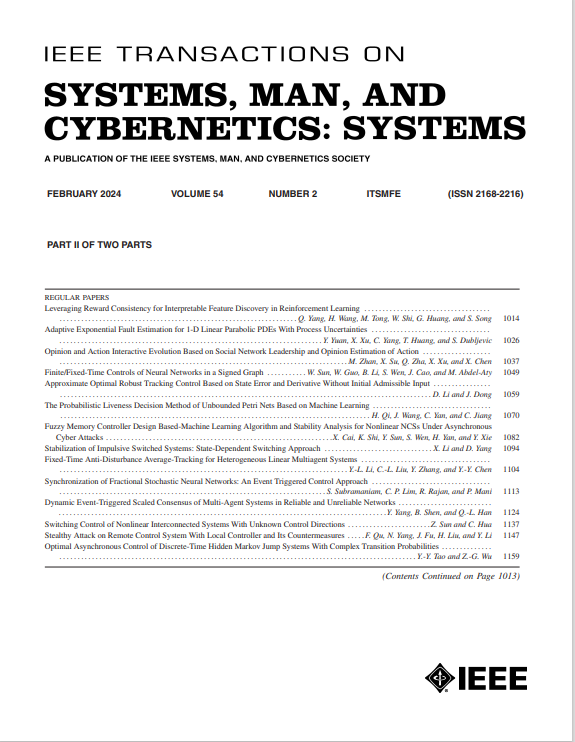软双线性倒立摆:实现软接触运动的模型
IF 8.6
1区 计算机科学
Q1 AUTOMATION & CONTROL SYSTEMS
IEEE Transactions on Systems Man Cybernetics-Systems
Pub Date : 2024-12-04
DOI:10.1109/TSMC.2024.3504342
引用次数: 0
摘要
机器人研究界已经开发了几种有效的四足运动技术。这些方法大多通过假设足部与地形之间的刚性接触来简化建模和控制问题。然而,在柔顺地形或机器人配备软脚的情况下,这种假设不再成立,因为接触点移动并且反作用力经历延迟。本文提出了一种新颖的四足运动在软接触的存在。控制体系结构由两个模块组成:1)上游,运动规划器(MP)使用模型预测控制(MPC)计算可行的运动轨迹;2)下游,跟踪控制器(TC)使用分层优化(HO)实现运动跟踪。这种选择允许控制架构采用大的时间范围,而不会严重影响模型的准确性。首次考虑了两块体的接触柔度:在模型中,将经典的线性倒摆模型扩展为软双线性倒摆(ship)模型;相反,TC是一个全身控制器(WBC),它考虑了全动力学模型,包括软接触。对多台四足机器人的仿真结果表明,该方法能够以更高的稳定性和效率穿越软地形。此外,还评估了在MP和TC中包含遵从性的性能优势。最后,通过在软地形上行走的SOLO12机器人实验,验证了该方法的有效性。本文章由计算机程序翻译,如有差异,请以英文原文为准。
Soft Bilinear Inverted Pendulum: A Model to Enable Locomotion With Soft Contacts
The robotics research community has developed several effective techniques for quadrupedal locomotion. Most of these methods ease the modeling and control problem by assuming a rigid contact between the feet and the terrain. However, in the case of compliant terrain or robots equipped with soft feet, this assumption no longer holds, as the contact point moves and the reaction forces experience a delay. This article presents a novel approach for quadrupedal locomotion in the presence of soft contacts. The control architecture consists of two blocks: 1) upstream, the motion planner (MP) computes a feasible trajectory using model predictive control (MPC) and 2) downstream, the tracking controller (TC) employs hierarchical optimization (HO) to achieve motion tracking. This choice allows the control architecture to employ a large time horizon without heavily compromising the model’s accuracy. For the first time, both blocks consider the contact compliance: in the MP, the classic linear inverted pendulum model is extended by proposing the soft bilinear inverted pendulum (SBIP) model; conversely, the TC is a whole-body controller (WBC) that considers the full dynamics model, including the soft contacts. Simulations with multiple quadrupedal robots demonstrate that the proposed approach enables traversing soft terrains with improved stability and efficiency. Furthermore, the performance benefits of including the compliance in the MP and TC are evaluated. Finally, experiments on the SOLO12 robot walking on soft terrain validate the proposed approach’s effectiveness.
求助全文
通过发布文献求助,成功后即可免费获取论文全文。
去求助
来源期刊

IEEE Transactions on Systems Man Cybernetics-Systems
AUTOMATION & CONTROL SYSTEMS-COMPUTER SCIENCE, CYBERNETICS
CiteScore
18.50
自引率
11.50%
发文量
812
审稿时长
6 months
期刊介绍:
The IEEE Transactions on Systems, Man, and Cybernetics: Systems encompasses the fields of systems engineering, covering issue formulation, analysis, and modeling throughout the systems engineering lifecycle phases. It addresses decision-making, issue interpretation, systems management, processes, and various methods such as optimization, modeling, and simulation in the development and deployment of large systems.
 求助内容:
求助内容: 应助结果提醒方式:
应助结果提醒方式:


